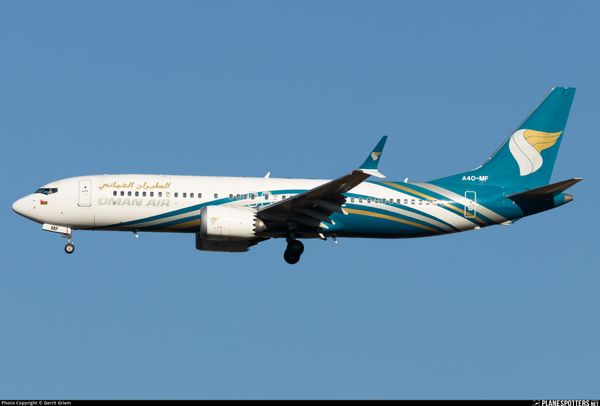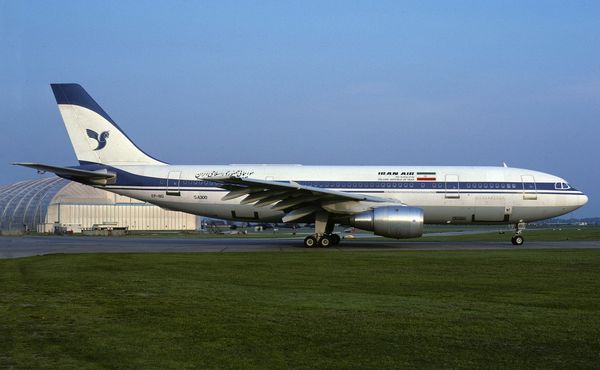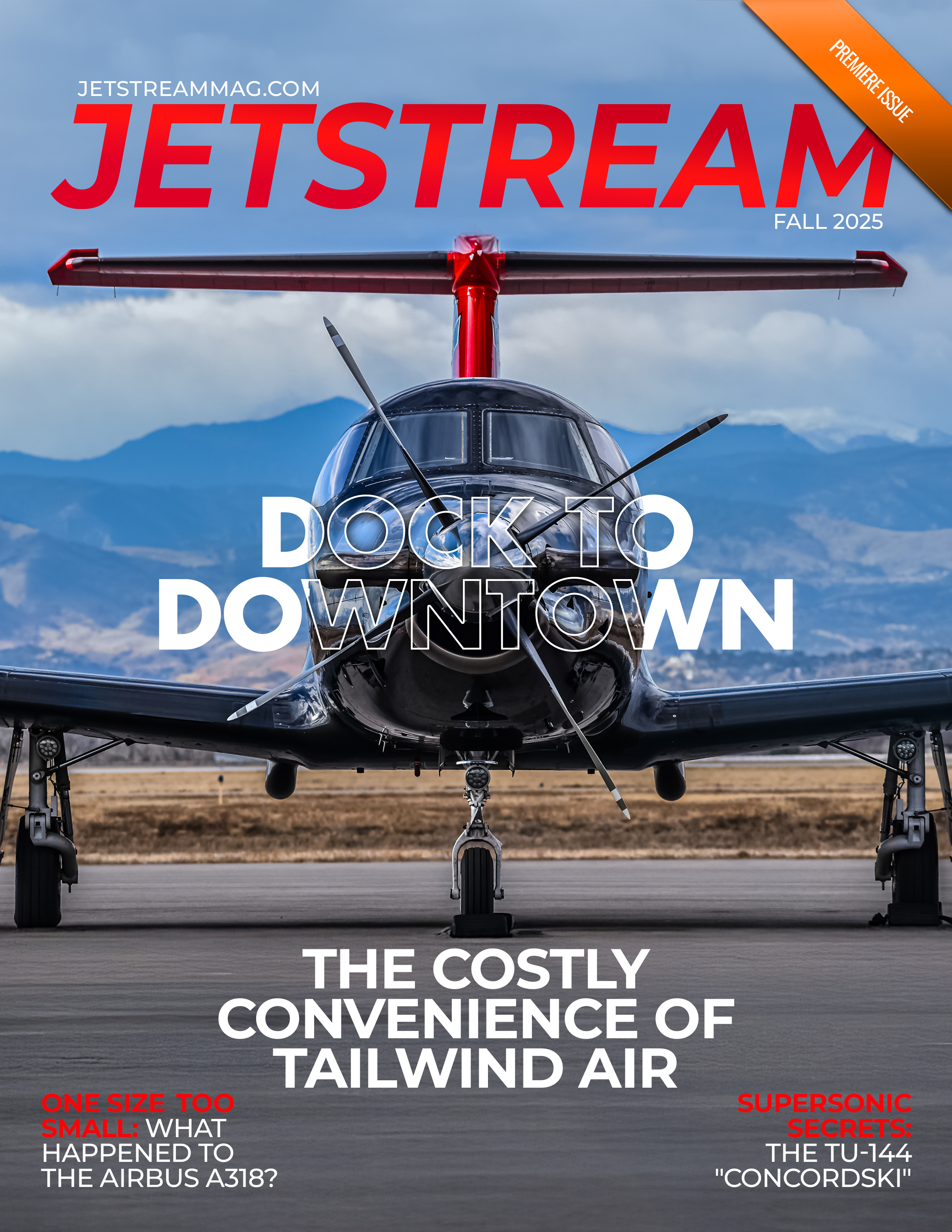The world's largest passenger airplane — the Airbus A380 Superjumbo — was initially developed to revolutionize intercontinental travel by transporting high volumes of passengers over long distances. However, 20 years later, the A380 has not been the financial success that Airbus hoped it would be.
While the A380 has made a lasting impression on the aviation industry around the world, its high cost of operation, namely due to high fuel and maintenance costs, has caused many airlines to retire their superjumbo fleets earlier than expected. One airline, however, is a clear exception in this case, with its fleet of more than 100 A380s shaping the backbone of its long-haul operations.

Dubai-based airline Emirates is the world's largest operator of the Superjumbo and has expressed intentions of keeping its A380s for many years to come. How does Emirates make the A380 work, and why is it so difficult for other airlines to follow suit?
The Superjumbo’s Biggest Fan
Emirates received its first A380 in 2008, becoming the second airline in the world to fly the Superjumbo after Singapore Airlines. By October 2017, Emirates received its 100th A380, with 42 still on order. 19 of these orders were later canceled. At its peak, Emirates operated 123 A380s in its fleet at once, accounting for 49% of the 251 total A380s that Airbus produced.
Big Wings, Bigger Job: How the Dreamlifter Keeps Boeing's Assembly Lines Moving
The airline has always been a staunch supporter of the A380, even advocating for a more fuel-efficient variant to be developed by Airbus. If this had happened, Emirates would have considered buying up to 200 more of the aircraft.

However, the A380 has been largely described by experts as "too big and too late." The aircraft entered service in 2008, right at a time when twin-engined widebody aircraft were permeating the market.
With four engines, the A380 required more fuel to operate and, given its massive size, fueling it for long transcontinental voyages was not financially easy.
The COVID-19 pandemic was the biggest test for the aviation industry. Airlines that had plans to retain their Boeing 747 and A380 fleets were suddenly faced with a make-or-break situation. Specifically, they could incur high operating costs to keep these aircraft in service despite record-low demand, or retire them early and focus their fleet strategies more on more efficient twin-engined aircraft. Unsurprisingly, most airlines chose the latter.
Mixed Signals: The Tragic Story of Iran Air Flight 655
Despite the massive downturn in worldwide travel, Emirates never gave up on the A380. With so many in its fleet by 2020, the effects of completely retiring the type would have hurt the airline more than keeping them around would.
Emirates has continued to invest significantly in the A380, which became the first aircraft in its fleet to feature the airline’s brand-new Premium Economy cabin, launched in 2022.
Its continued commitment to the Superjumbo is also evident in its financial strategy. Initially, many of Emirates' A380s were bought on leasing agreements. However, the airline has recently been opting to convert those leases into outright purchases. In July 2025, Emirates spent $180 million to purchase four A380s that were previously leased. With the leases for these aircraft set to expire in the coming months, the airline chose to buy them outright rather than renew the agreements.

This move is also supported by Emirates's plans to continue flying the A380 until around 2040, a shift from the previous estimate of 2035 reported by Bloomberg. While Emirates has retired five of its oldest A380s — and plans to eventually retire more — the carrier is still committed to keeping the Superjumbo flying for substantially longer than its competitors.
The A380 Strategy That Works
According to Emirates CEO Sir Tim Clark, one of the strong suits of the A380 is being a perfect solution to address airport crowding.
With airport congestion worsening around the world — primarily in busy hubs like New York-JFK and London Heathrow — it becomes increasingly difficult for airlines to schedule flights at their desired times. More air traffic means increased possibilities for delays, and more aircraft flying cause more emissions that can negatively impact the environment.
Supersonic Secrets: The Tupolev Tu-144 "Concordski"
In an interview with Business Insider, Clark stated, "Airport congestion around the world is getting worse...and up-gauging aircraft is the solution for this."
Thus, operating one A380 to a specific city allows the carrier to carry more passengers while managing fewer aircraft operations and flights.
However, there is a caveat to this: not all international airports around the world are equipped to handle the A380. Due to its sheer size, the A380 requires a specialized set of airport certifications to operate safely. These include specific standards for runway width, reinforced apron surfaces, and extended jetways to accommodate the aircraft’s unique dimensions.

Dubai's Location Only Makes Things Better
Emirates' business model utilizes the "hub and spoke" model, which consists of using a central hub — Dubai, in this case — as a transit city to serve various destinations around the world. The Middle East is conveniently located such that airlines from this region can fly nonstop to anywhere in the world. Emirates and competing Gulf airlines have taken advantage of this geographic opportunity, offering daily flights to numerous cities in almost every country in the world.
Regardless, Dubai’s location provides the perfect scenario for Emirates and the A380. It can funnel large volumes of passengers into Dubai from a western city like San Francisco or New York, then easily connect them to an onward destination such as Kuala Lumpur or Sydney. Furthermore, Dubai, being a tourist destination in itself, allows Emirates to capture demand not only from transit passengers but also from tourists who are flying solely to Dubai.
Fuel, Faith, and Four Engines: How Emirates Makes the A380 Work
Emirates knows that by promoting travel to Dubai with related activities, combined with its award-winning service and expansive route map, it can attract passengers willing to pay a premium to fly with it. Thus, the large amounts of money that the airline has poured into the A380 are eventually offset by its high demand.

The numbers speak for themselves. Emirates posted a record profit of $5.2 billion for the 2024-2025 fiscal year. While the airline has a large fleet of Boeing 777s and a growing Airbus A350 fleet, the A380 has played a large role in its success. This can also be attributed to the growing presence of Premium Economy across its aircraft, a new product that the airline rolled out in 2022.
Premium Economy has proven itself to be a highly profitable investment for the airline, even more so than Business or First Class. This is because Emirates does not need to invest in a better "hard product" — the seating layout, recline, or in-flight entertainment screens — but instead, in a better "soft product" — the food, onboard amenities, and in-flight service. With these added services compared to standard Economy Class, the airline can price its tickets significantly higher while keeping costs low.
Ghosts of 191: The Crash Site that Continues to Haunt Chicago to this Day
The A380's Highly Coveted Onboard Experience
With such a large cabin size, the A380 has allowed airlines to offer unique amenities they otherwise could not fit in other aircraft.
Emirates is the only airline to offer onboard showers on its A380s. There are two shower spas offered to First Class passengers. Aside from the shower, these spas also contain the dedicated First Class lavatories, which are much more spacious than a standard airplane bathroom.
Emirates' A380 also features an onboard bar and lounge accessible only to First and Business Class passengers. The presence of such large lounge areas is common across multiple A380 operators, including Etihad Airways, Qatar Airways, and Korean Air. While smaller aircraft have similar spaces — such as the lounge found on Virgin Atlantic's 787-9 Upper Class — the A380’s offerings provide significantly more room to relax and socialize.

In fact, the lounge on Virgin’s 787s will soon be removed as the carrier revamps its 787 fleet with new Upper Class seats. The airline will expand the number of Upper Class seats on its Dreamliners, hence necessitating the removal of the bars.
Such a problem is not present on the A380. Emirates' three-class A380 configuration seats 14 in First Class, 76 in Business, and 399 in Economy for a total of 489 passengers. It already fits in so many passengers that the number of seats lost by the presence of the bar simply does not matter.
Compare this to a smaller aircraft like a 787, or even Emirates' own Boeing 777-300ERs. These aircraft have a thinner fuselage than the A380, thus making it more difficult for the bar to be installed in a way that makes economic sense for the carrier.
While Emirates' A380 Economy Class is nothing remarkable, the widened A380 fuselage offers passengers more space. Combined with high ceilings and lower cabin noise, even flying in the back of the A380 becomes an unforgettable experience.

In Frequent Service
Although many airlines have expressed concerns regarding the A380's long-term viability, Emirates has shown nothing but praise for the Superjumbo, with the airline retaining 116 of the type in active service. London is by far the biggest Emirates A380 destination, with up to seven daily A380 flights to Heathrow Airport and another two to Gatwick Airport.
The overall marketing benefits of the A380 make it an iconic aircraft for Emirates. The thought of the A380 has become almost synonymous with Emirates and has become a major part of the airline's brand. While other airlines have given up on the Superjumbo, namely due to high operational costs, Emirates has used its location, brand identity, and premium services to make the A380 profitable, appealing to passengers, and iconic.
This content is only available with an AeroXplorer+ subscription.
Wizz Air Relaunches Suceava Base with Two A321neos and Seven New Routes » Frontier Airlines Wraps Up 2025 with Major International Expansion from Atlanta » NTSB: Maintenance Error Led to Citation CJ4 Gear Collapse in Baton Rouge »
Comments (54)
 fnfOzvSR
20
fnfOzvSR
20
 fnfOzvSR
fnfOzvSR
 fnfOzvSR
20
fnfOzvSR
20
 fnfOzvSR
20
fnfOzvSR
20
 fnfOzvSR
fnfOzvSR
 fnfOzvSR
20
fnfOzvSR
20
 fnfOzvSR
20
fnfOzvSR
20
 fnfOzvSR
20
fnfOzvSR
20
 fnfOzvSR
20
fnfOzvSR
20
 fnfOzvSR
fnfOzvSR
 fnfOzvSR
20
fnfOzvSR
20
 fnfOzvSR
fnfOzvSR
 fnfOzvSR
20
fnfOzvSR
20
 fnfOzvSR
fnfOzvSR
 fnfOzvSR
20
fnfOzvSR
20
 fnfOzvSR
fnfOzvSR
 fnfOzvSR
20
fnfOzvSR
20
 fnfOzvSR
fnfOzvSR
 fnfOzvSR
fnfOzvSR
 fnfOzvSR
fnfOzvSR
 fnfOzvSR
20
fnfOzvSR
20
 fnfOzvSR
fnfOzvSR
 fnfOzvSR
20
fnfOzvSR
20
 fnfOzvSR
fnfOzvSR
 fnfOzvSR
fnfOzvSR
 fnfOzvSR
fnfOzvSR
 fnfOzvSR
fnfOzvSR
 fnfOzvSR
fnfOzvSR
 fnfOzvSR
fnfOzvSR
 fnfOzvSR
fnfOzvSR
 fnfOzvSR
fnfOzvSR
 fnfOzvSR
fnfOzvSR
 fnfOzvSR
fnfOzvSR
 fnfOzvSR
fnfOzvSR
 fnfOzvSR
fnfOzvSR
 fnfOzvSR
fnfOzvSR
 fnfOzvSR
fnfOzvSR
 fnfOzvSR
fnfOzvSR
 fnfOzvSR
fnfOzvSR
 fnfOzvSR
fnfOzvSR
 fnfOzvSR
fnfOzvSR
 fnfOzvSR
fnfOzvSR
 fnfOzvSR
fnfOzvSR
 fnfOzvSR
fnfOzvSR
 fnfOzvSR
fnfOzvSR
 fnfOzvSR
fnfOzvSR
 fnfOzvSR
fnfOzvSR
 fnfOzvSR
fnfOzvSR
 fnfOzvSR
fnfOzvSR
 fnfOzvSR
fnfOzvSR
 fnfOzvSR
fnfOzvSR
 fnfOzvSR
fnfOzvSR
 fnfOzvSR
fnfOzvSR
 fnfOzvSR
fnfOzvSR
Add Your Comment
SHARE
TAGS
INFORMATIONAL Jetstream Jetstream Magazine Airbus Airbus A380 Emirates Dubai DXBRECENTLY PUBLISHED
 Oman Air Returns To Singapore After Nine Years with New Boeing 737 MAX Service
Oman Air Returns To Singapore After Nine Years with New Boeing 737 MAX Service. It will resume nonstop service to Singapore Changi Airport (SIN) starting July 2, 2026, restoring a vital link between the Sultanate and Southeast Asia that was suspended in 2017.
ROUTES
READ MORE »
Oman Air Returns To Singapore After Nine Years with New Boeing 737 MAX Service
Oman Air Returns To Singapore After Nine Years with New Boeing 737 MAX Service. It will resume nonstop service to Singapore Changi Airport (SIN) starting July 2, 2026, restoring a vital link between the Sultanate and Southeast Asia that was suspended in 2017.
ROUTES
READ MORE »
 Wizz Air Relaunches Suceava Base with Two A321neos and Seven New Routes
Wizz Air has officially reopened its base at Suceava "Stefan cel Mare" International Airport (SCV). The reopening immediately enhances connectivity by launching seven new direct routes to five countries.
ROUTES
READ MORE »
Wizz Air Relaunches Suceava Base with Two A321neos and Seven New Routes
Wizz Air has officially reopened its base at Suceava "Stefan cel Mare" International Airport (SCV). The reopening immediately enhances connectivity by launching seven new direct routes to five countries.
ROUTES
READ MORE »
 How Borders Shape Human Stories
The existence of borders can be seen through not only maps; they are also emotional markers that determine how an individual travels or moves, how an individual dreams, and what the individual considers to be their place in the world.
INFORMATIONAL
READ MORE »
How Borders Shape Human Stories
The existence of borders can be seen through not only maps; they are also emotional markers that determine how an individual travels or moves, how an individual dreams, and what the individual considers to be their place in the world.
INFORMATIONAL
READ MORE »







